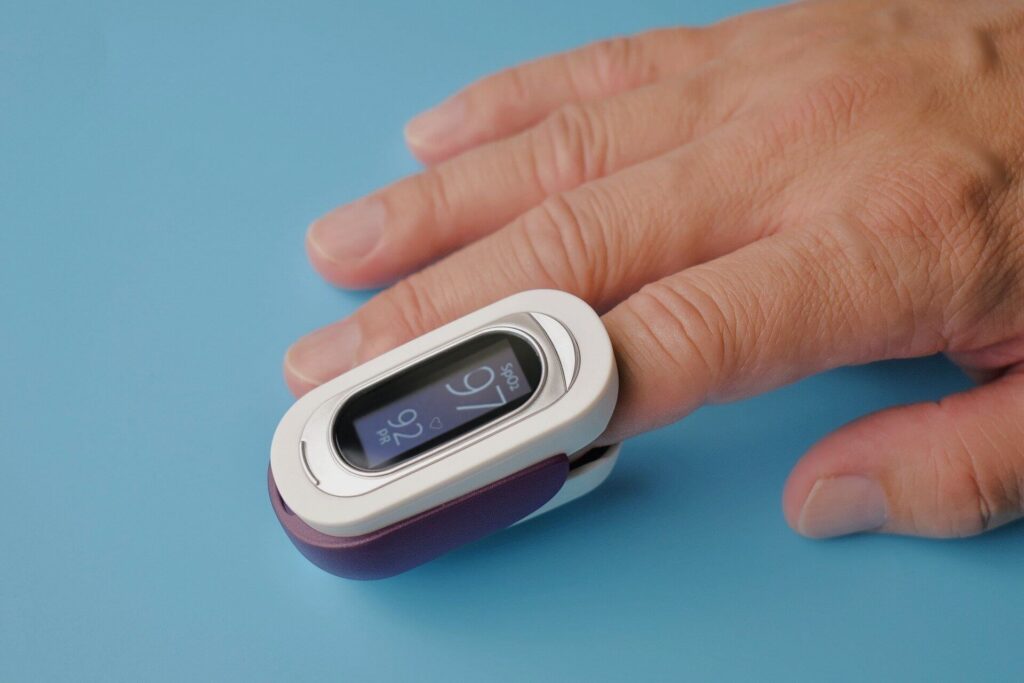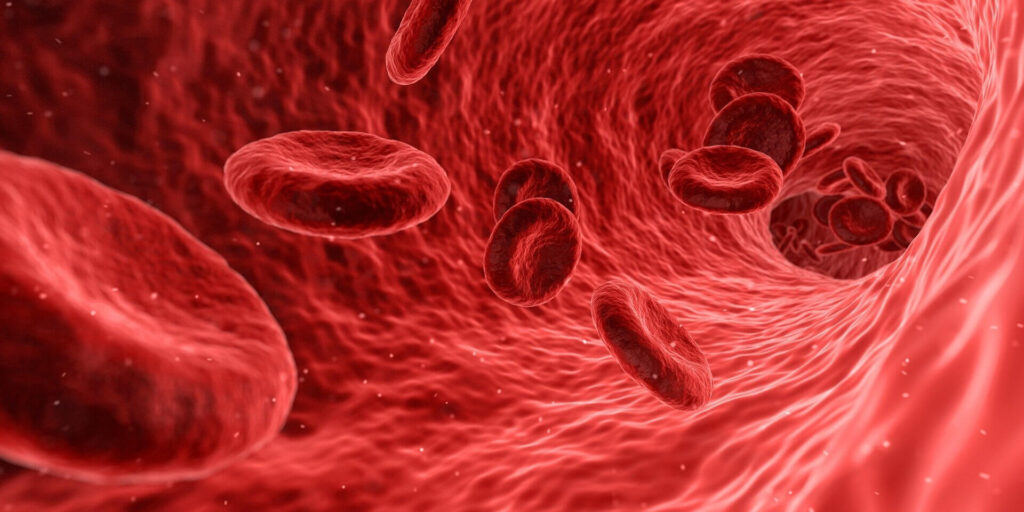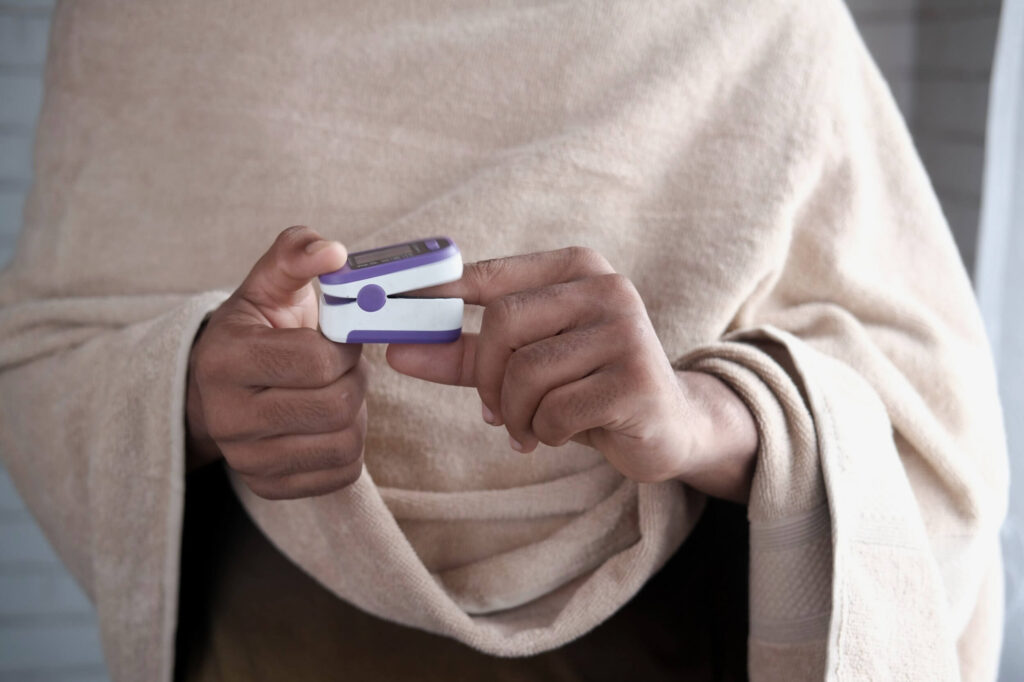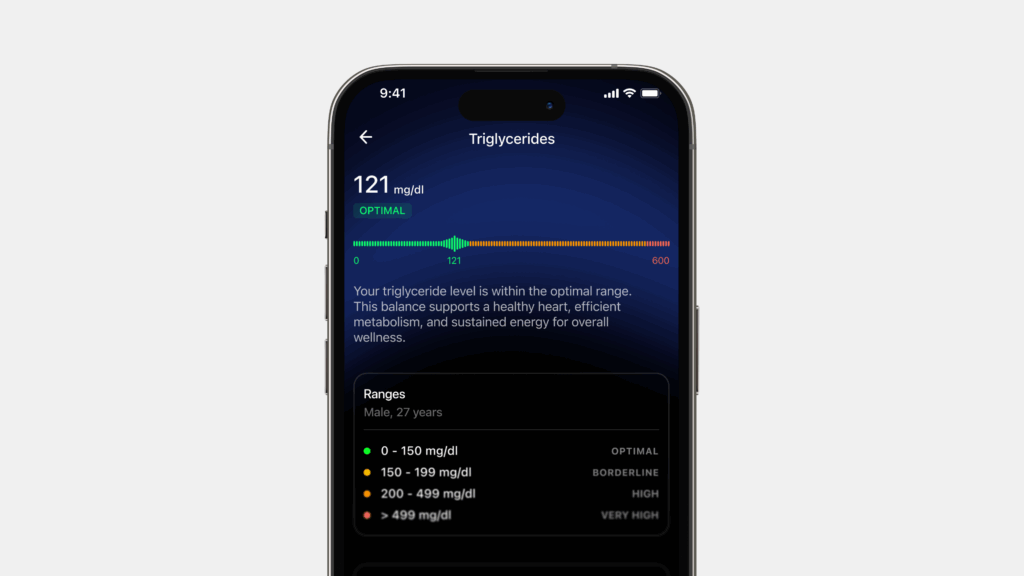After the onset of the pandemic, blood oxygen level turned into a metric that people tracked feverishly and the pulse oximeter became a staple tool in our medical kits. When we’re short of breath, we tend to immediately worry about our lungs and if they have enough air. However, the 25 trillion red blood cells coursing through our bodies are just as important when it comes to oxygen availability. Let’s take a closer look at why our blood oxygen level is so essential and why we should track it.
What is blood oxygen?
Red blood cells transport oxygen from the lungs to the rest of the body with the help of a molecule called hemoglobin. The amount of oxygen circulating with the blood is called blood oxygen level, and it’s calculated and displayed as a percentage (also known as oxygen saturation).
How can you measure blood oxygen levels?
A non-invasive test known as pulse oximetry measures your oxygen saturation out of a score of 100. An oxygen saturation of 95 to 100 percent is considered normal, but if your levels dip below 88 percent, there may be cause for concern. For example, some people with COVID-19 have dangerously low blood oxygen levels.
The test uses a sensor—known as an oximeter—that is placed on your earlobe or fingertip. The oximeter shines two lights into your skin to work out how much is absorbed by your blood. One light is red, and the other is infrared.
Blood with a healthy amount of oxygen will absorb more infrared light, allowing the red light to pass through. On the other hand, blood without enough oxygen will absorb more red light, with the infrared light passing through.
The oximeter immediately displays the oxygen saturation percentage.

Test outcomes can be affected by darker skin tones, bright lights and conditions such as Raynaud’s syndrome and anemia.
In addition to the oximeter, some wearable fitness devices can also easily measure your blood oxygen level. However, these aren’t approved by international health agencies, and they may not always be accurate. Therefore, it’s best to compare the results of these devices with a proper test.
The most accurate test, known as an arterial blood gas (ABG) test, can be done at a clinic or hospital. A blood sample is taken from an artery and sent to the laboratory to test oxygen, carbon dioxide and acidity (pH) levels. A healthy blood oxygen level will measure between 75 and 100 mm Hg (millimetres of mercury). Anything below 60 mm Hg is considered low.
Why should we measure our blood oxygen levels?
The medical term for low blood oxygen is hypoxemia. In this state, the body struggles to deliver oxygen to all of its tissues and organs, leading to symptoms such as trouble in breathing, headaches, dizziness, chest pain, rapid heart rate, a sense of euphoria and confusion.
Hypoxemia is slightly different from hypoxia, which refers to low oxygen levels in your body’s tissues. Hypoxemia can cause hypoxia, and they often occur together.
There are various causes of low blood oxygen levels, including
- Blood clots in the lung (also known as pulmonary embolism),
- Scarring of lung tissue (also known as pulmonary fibrosis),
- Water, blood or pus filling the lung’s air sacs,
- Sudden exercise if you have underlying heart or lung disease,
- Certain medications such as pain relievers or narcotics,
- Moving from low to high altitude (such as when climbing a mountain) as there is less oxygen at higher altitudes,
- Anemia (low red blood cell count).
Additionally, conditions that cause the lungs to lose their ability to inhale air and deliver oxygen to our blood (and therefore our entire body) can also result in low blood oxygen levels. Examples include
- Asthma,
- Congenital heart disease,
- COVID-19,
- Emphysema, i.e., damaged lung air sacs causing shortness of breath,
- Acute respiratory distress syndrome (ARDS),
- Pneumonia,
- Sleep apnea.
Other conditions, such as diabetes, that prevent the blood from circulating well from the lungs to the organs may also result in low blood oxygen levels. People with heart or lung conditions (like cystic fibrosis) need to regularly check their blood oxygen levels. For instance, patients with cystic fibrosis have a build-up of mucus in their lungs. This inhibits their gas exchange (normal respiration), and they have higher levels of carbon dioxide and lower levels of oxygen in their blood. Testing their oxygen levels helps doctors determine how their lungs are functioning at any given time.

Blood oxygen and metabolic health
Hemoglobin is the protein in your red blood cells that conveys oxygen from your lungs to the rest of your body. Since our blood transports oxygen around our bodies, one would think that high hemoglobin levels would be beneficial. However, researchers have found evidence to support the opposite when it comes to metabolic health.
Metabolic disorders, such as diabetes, appear to be linked to higher hemoglobin levels. On the other hand, low levels are connected to a lower body mass index (BMI) and overall better metabolic health.
Researchers think this may be because low hemoglobin levels—and therefore less oxygen-carrying capacity—cause a hypoxic response in the body. This alert about low oxygen levels leads to a shift in energy metabolism and causes a protective inflammatory response. In other words, people with low hemoglobin levels are more protected against metabolic impairments (such as high blood pressure).
This hypoxic response is regulated by Hypoxia-Inducible Factor (HIF) enzymes and supports body tissues that have reduced oxygen supply. Researchers suggest that drugs that act as inhibitors of these enzymes may potentially be used to treat metabolic disorders and obesity. Interestingly, these same medicinal agents are currently being used to treat anemia.
How to increase blood oxygen levels
If your blood oxygen levels are dangerously low, your doctor may give you supplemental oxygen through an oxygen mask or nasal cannula (a narrow plastic hose with a prong in each nostril). This gives you higher levels of oxygen than is available through normal air.
To maintain healthy oxygen levels in your blood, there are other natural methods
- If you’re a smoker, do your best to quit. Just two weeks of no cigarettes will improve your circulation and oxygen levels and can increase your lung function by as much as 30%,
- Practice breathing exercises such as deep belly breathing to open your airways and increase the amount of oxygen you take in and circulate through your body,
- Breathe as much fresh air as possible. Open the windows and spend time outside,
- Invest in some house plants. They purify indoor air by removing carbon dioxide and replenishing the room’s oxygen levels.
Conclusion
We barely notice the pulse of oxygen through our bodies, yet when we’re starved of this essential molecule, it is impossible to ignore. Fortunately, if we are diligent and check our blood oxygen levels when things don’t feel quite right, we may detect potential disease early on. An oxygen saturation of 95 to 100 percent is considered normal, but if your levels dip below 88 percent, there may be cause for concern. A pulse oximeter can help you monitor it. Low oxygen levels can cause blood clots in the lung, scarring of the lung tissue, anemia and more. Metabolic disorders are linked to higher hemoglobin levels. Conditions such as asthma, Covid-19, diabetes and sleep apnea can cause low oxygen levels. Interventions such as deep breathing and purifying indoor air can help to maintain healthy oxygen levels. Supplemental oxygen through an oxygen mask is medically provided in case of low oxygen levels.
Next time you feel out of breath, perhaps after a really long run, consider all the hard work your red blood cells are doing by carrying much needed oxygen from your lungs to your muscles.
Disclaimer: The contents of this article are for general information and educational purposes only. It neither provides any medical advice nor intends to substitute professional medical opinion on the treatment, diagnosis, prevention or alleviation of any disease, disorder or disability. Always consult with your doctor or qualified healthcare professional about your health condition and/or concerns and before undertaking a new health care regimen including making any dietary or lifestyle changes.
References
- https://www.healthline.com/health/number-of-cells-in-body#bacterial-cells
- https://www.blf.org.uk/support-for-you/breathing-tests/tests-measure-oxygen-levels
- https://www.medicalnewstoday.com/articles/321044#causes
- https://medicalxpress.com/news/2021-11-hemoglobin-metabolic-health-high-linked.html
- https://www.webmd.com/fitness-exercise/how-to-increase-blood-oxygen-level#2








